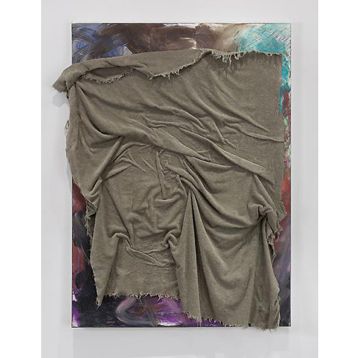Since you can’t swing a cat without hitting a picture of Charlie Sheen at this point, I thought I’d choose a classic for today’s column. I mean, Art21 shouldn’t be left out of the fun, even though Charlie has nothing to do with today’s post.
Today’s post is about teaching with, or perhaps about ambiguity. It’s a tough topic because in today’s standardized-test-driven-one-size-fits-all educational landscape ambiguity is, well, a little too ambiguous. It’s tough to score. It’s tough to stick into a chart or slideshow. It basically gives some people the creeps because they are persistently looking for “the” answer. But artists, especially contemporary artists, are dealing with ambiguity all the time. Artists such as Paul McCarthy, Arturo Herrera, John Baldessari, Amy Sillman, Spencer Finch and Mark Bradford often embrace ambiguity and multiple interpretations of their work.
But how does one teach about working with ambiguity? A starting point might include sharing works by some of the artists above and then beginning a unit of study where students create a single work that communicates more than one viewpoint or perspective. Another possibility involves asking students to create work around a theme and collecting different interpretations from viewers before actually sharing artist statements about the finished art. Participants then compare and discuss how the work was perceived initially and how that perception perhaps changed.
Recently I visited the David Hammons exhibit at L&M Arts and was struck by my reaction to the work formally vs. what the works “meant”. On one hand, this was not visually stimulating stuff- brushy, colorful abstract painting that reminded me of mall art partially covered with trash bags and/or cloth. On the other hand, you could feel a particular contempt for the art establishment through the construction of the work juxtaposed with a very stately setting. On one hand the show was, as most gallery shows go, very viewer-unfriendly- not a heck of a lot to bite into or read as you roamed the two floors. On the other hand I realized I was experiencing this show in a gallery that had a door buzzer and guard hired to protect works covered by strategically placed trash bags which I peered through in order to uncover… something. This was about being shut out and being part of the “establishment”.
Teaching about ambiguity involves inviting multiple interpretations and ways of working. It involves taking an artist like David Hammons and actively seeking what the work means in relation to the way it is put together. It involves becoming comfortable with not knowing what’s coming next… and perhaps therein lies the only connection between Charlie Sheen and this week’s column.






Pingback: Teaching with Contemporary Art: The First Three Years | Art21 Blog